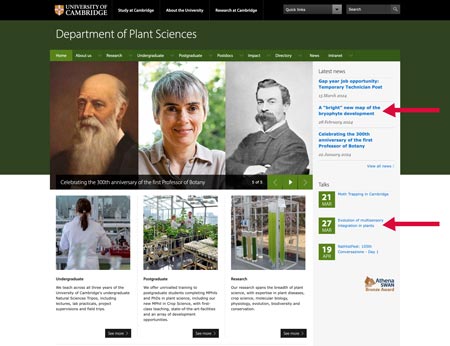This page covers
- when to use blocks
- when to avoid using blocks
- content standards for blocks
- how to create blocks
- editing and deleting blocks
When to use blocks
You can use blocks to signpost links to related content that users may be interested in.
You can use blocks on your homepage for:
- opening hours for your service or contact details
- event, news or blog feeds (you'll need to contact the Drupal team to set these up)
You can also create blocks that appear above or below the content on your web page. This could be useful for adding contact details to the bottom of pages or sections of your site. You'll only need to update them in one place to appear so they're easier to manage.
When to avoid using blocks
- Do not include video content in blocks. The embedded videos will be very small and the captions will be hard to read.
- Avoid using blocks to signpost to related content on basic pages. Use the sidebar items or related links on the basic page template for this. Alternatively, add them at the bottom of your body of your body copy.
- Do not include large chunks of text. You should include this in your body copy instead.
- Do not embed an X (formerly Twitter) social media feed.
Content standards for blocks
Do not include more than 3 related links. Too many links can be overwhelming for users.
How to create blocks
Hover over 'Structure' then 'Blocks'. Select 'Add block'.
Provide the block description and content for the body field.
In the 'Region Settings' area, under University of Cambridge, please choose where you want your block to appear, for example in the sidebar.
Below, in the Visibility settings area, you can specify the pages on which your block will appear. For example, for the Research Professional web page the path will be information-sources/research-professional
Select 'Save block'.
On the next screen you will have the opportunity to reorder your blocks, by dragging them with the cross icon. This will affect the order in which your blocks will appear.
Select 'Save blocks'.
Editing and deleting blocks
If you would like to edit an existing block, hover over 'Structure' and select 'Blocks'. Find the block you want to change and select 'configure'.
If you're unable to edit a block, it may be because it's a 'view' instead of a block. Contact the Drupal team if you need help.
Make changes to the content and save.
If you would like to delete an existing block, hover over 'Structure' and then 'Blocks'. Find the block you want to get rid of and select 'delete' (next to configure).
Select 'Save'.
Get help
If you need help with your Drupal website, contact the Drupal team via webmaster@admin.cam.ac.uk.
Content editors around the University can get guidance and advice from the Content Community.





